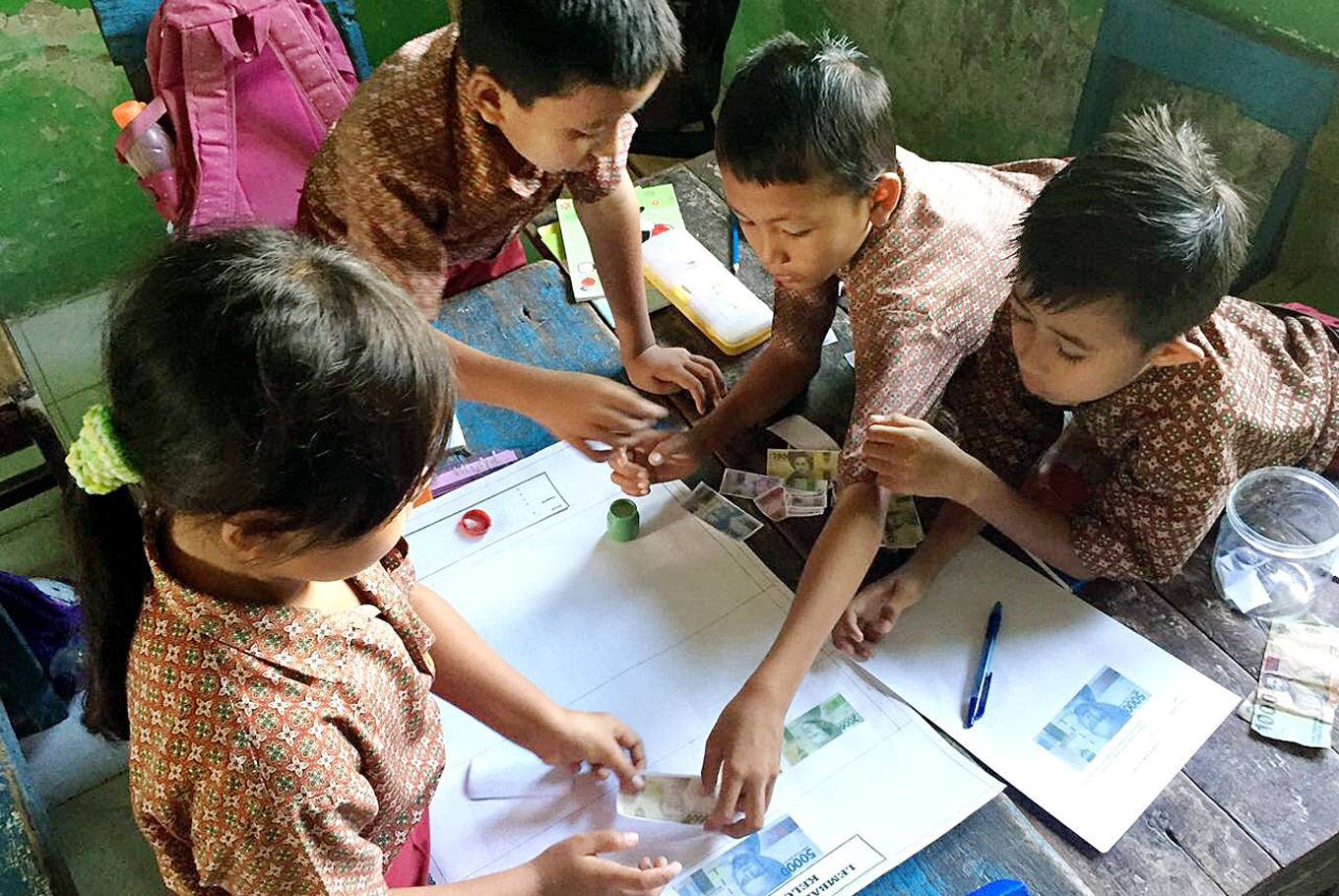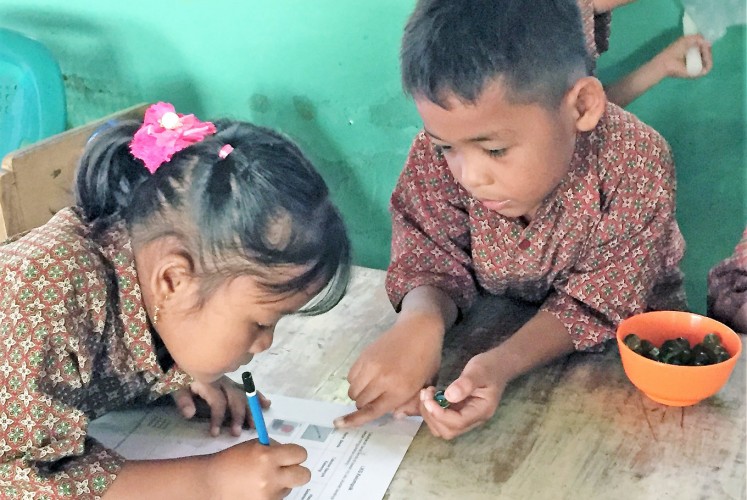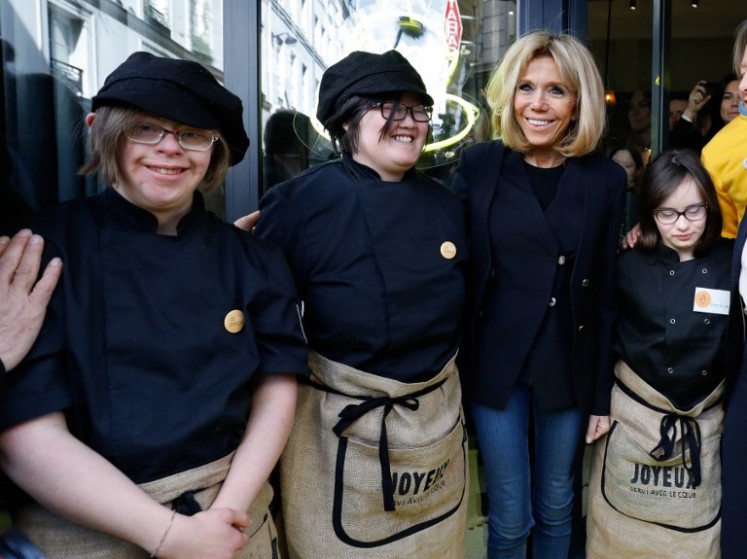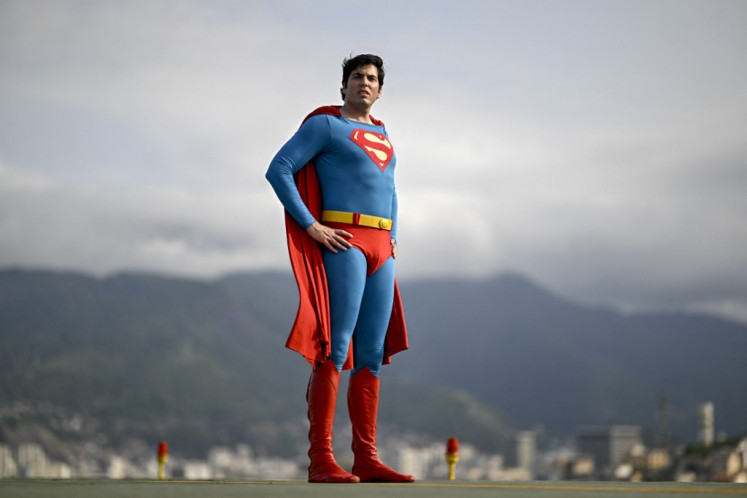Inovasi teaching numeracy 'out of the box' in Sumbawa
To a casual passerby, SDN 1 Lopok in Sumbawa, West Nusa Tenggara, looks like any other elementary school in the country. But inside its classrooms, something extraordinary is taking place.
Change Size
 Teamwork: Second-graders work in groups using actual objects in the process of learning their day’s lesson at SDK 1 Lopok elementary school in Sumbawa, West Nusa Tenggara. (Benita Chudleigh/File)
Teamwork: Second-graders work in groups using actual objects in the process of learning their day’s lesson at SDK 1 Lopok elementary school in Sumbawa, West Nusa Tenggara. (Benita Chudleigh/File)
The morning was bright and the Grade 1 classroom was lively at SDN 1 Lopok elementary school in Sumbawa, West Nusa Tenggara (NTT).
It was the first class of the day and the teacher, Ibu Norma, had prepared a lesson on measurements. Dressed in matching batik shirts and red pants or skirts, 25 bright-faced 7-year-old students sat quietly as Ibu Norma stood at the front of the class and introduced the day’s lesson.
“Think about your toys,” she told the class. “Which do you think would be heavier, a doll or a toy car?”
A buzz of excited chatter ran around the room as the children considered their answers. A few hands shot up. No one seemed to know the correct answer; was there a correct answer?
“How could we find out?” the teacher asked, followed by another buzz.
Already this lesson was different. There were no textbooks. There was more than one correct answer, leaving those observing to wonder where the teacher was going with this.
Ibu Norma produced a simple wire coat hanger and, suspending it from a nail in the classroom wall, demonstrated how the weight of two items could be compared if they were placed in plastic bags tied to either side of the coat hanger.
Now it was the children’s turn. Ibu Norma handed out a worksheet for each table, where a little cluster of children was tasked with estimating how many sticks of chalk would equal the weight of various classroom objects: a ruler, a blackboard eraser, a notebook.
As the children worked together in their groups, scampering back and forth from the table and the worksheet to where their coat hanger hung on the wall, the excitement of inquiry, of discovery and of learning was palpable.
This is the kind of school where any sensible parent would want their children enrolled.

To a casual passerby, the school looks like any other Indonesian primary school: a collection of red-roofed buildings surrounding a dusty playground. SDN 1 Lopok looks like typical state school in a remote village in eastern Indonesia.
But inside the classrooms, something extraordinary was taking place.
The teacher, after attending an initial three-day training session, had departed from the textbook and the children were excited about their learning: They were using real, concrete objects in their inquiry as they worked in groups, and the excitement of real learning was evident.
Ibu Norma, along with other teachers from SDN 1 Lopok and neighboring schools, is part of an program called Innovation for Indonesia’s School Children, or INOVASI. The program, a partnership between the Culture and Education Ministry and the Australian Department of Foreign Affairs and Trade, has been running for two years. But Ibu Norma’s school has joined only recently.
“INOVASI is like a big experiment,” said Ujang Sukandi, a mathematics specialist working with the program. “Our aim is to find out what works to improve learning outcomes in Indonesian schools, especially in literacy and numeracy. Here in Sumbawa, our focus is numeracy,” he said.
“We’re working with teachers, principals and government officials to encourage innovation to find local solutions to local learning challenges,” Ujang explained.

As the children went about their lesson discovering informal ways of measuring weight, Junaidaman, a school supervisor who is also a local facilitator for the INOVASI program, explained that three days of training were first held for all facilitators.
“We learned about how teachers can be empowered to find their own solutions. Most teachers are creative people. They just need to be given the permission to try. And they need to learn to reflect on their practice, to plan their lessons around the children’s interests. After that, we trained the teachers for three days. Now look,” he smiled.
In a discussion after the lesson, the teachers and facilitators explained what they were doing. Their sense of purpose was clear. The lesson on measurement was based on the 2013 Indonesian national curriculum, but it was not limited to the official textbook.
“We need more training,” said the school principal. “All the teachers need this kind of training.”
A representative of the Regional Planning Board explained that Sumbawa had budgeted for additional teacher training. The government was considering how to develop a policy to support continuing professional development for teachers. INOVASI was working in partnership with the government to design and implement the training, so that all teachers could benefit and all children could receive better education.
“What is the most important thing you have learned so far?” someone asked Ibu Norma.
She didn’t hesitate to answer enthusiastically: “I learned that we don’t have to stick to the textbook. One question can have many correct answers. And children learn better when they are active.”









